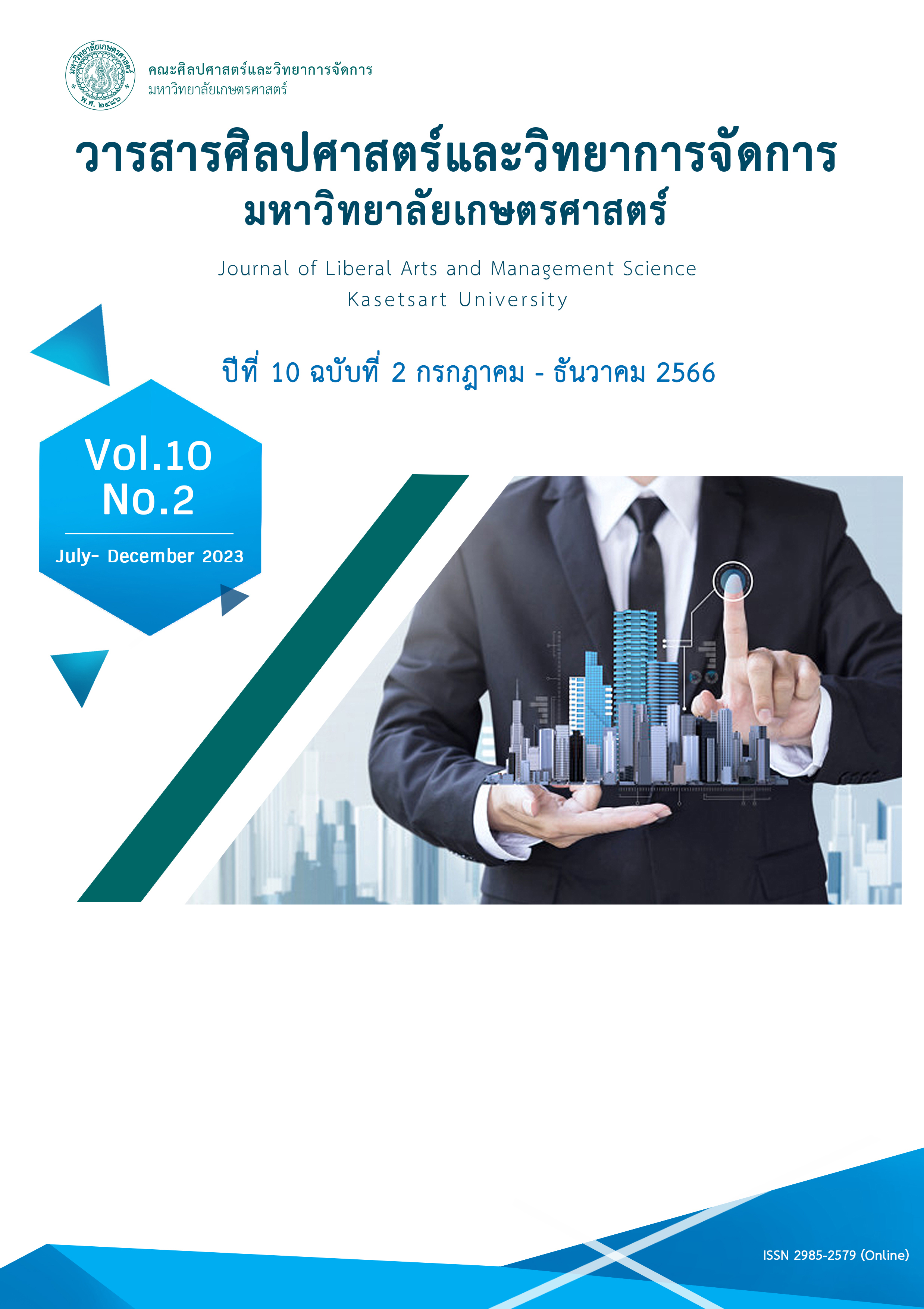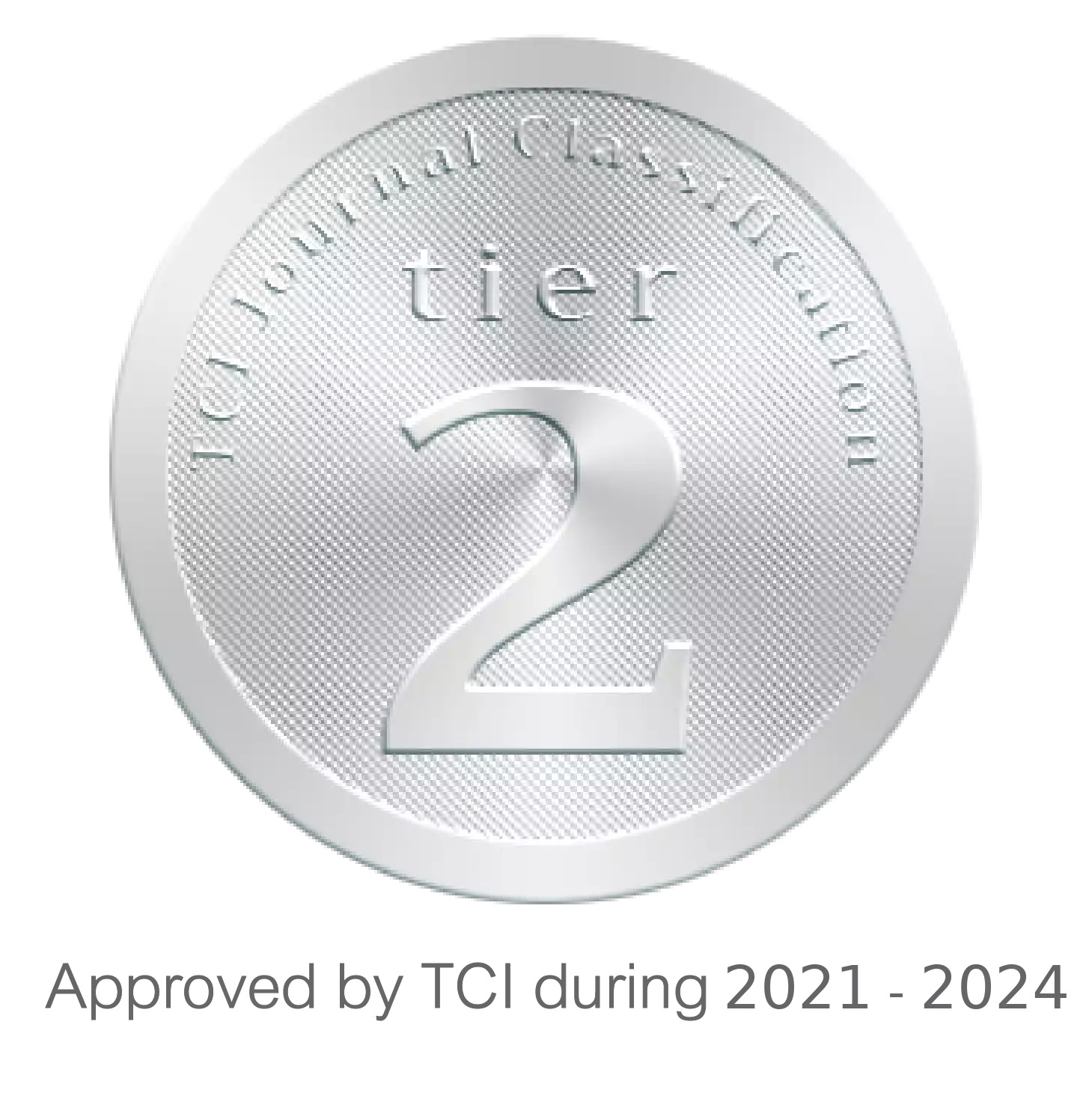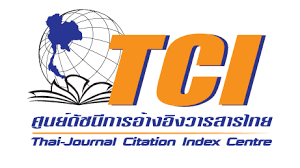ผลสัมฤทธิ์การพัฒนาศักยภาพด้านการผลิตและแปรรูปผลิตภัณฑ์ปศุสัตว์ด้วยวิทยาศาสตร์และเทคโนโลยีในพื้นที่ภาคใต้ชายแดน
คำสำคัญ:
ศักยภาพการผลิตและแปรรูป, ผลิตภัณฑ์ปศุสัตว์, ภาคใต้ชายแดนบทคัดย่อ
การวิจัยครั้งนี้มีวัตถุประสงค์เพื่อประเมินผลสัมฤทธิ์การพัฒนาศักยภาพด้านการผลิตและแปรรูปผลิตภัณฑ์ปศุสัตว์ด้วยวิทยาศาสตร์และเทคโนโลยีในพื้นที่ภาคใต้ชายแดน เป็นวิจัยเชิงผสมผสาน ประชากรที่ใช้ในการวิจัยครั้งนี้ คือ กลุ่มผู้มีส่วนได้ส่วนเสีย 3 กลุ่ม ประกอบด้วยเกษตรกรหรือผู้ประกอบการในพื้นที่ 3 จังหวัดภาคใต้ชายแดน จังหวัดยะลา จังหวัดนราธิวาส และจังหวัดปัตตานี ที่เข้าร่วมการดำเนินงาน จำนวน 1,305 คน ผู้ให้บริการ จำนวน 5 คน และผู้บริโภค จำนวน 30 คน โดยใช้ตัวแบบ CIPP เป็นกรอบการประเมินและอาศัยแบบสอบถามปลายเปิดและปลายปิด รวมถึงแบบสัมภาษณ์แบบมีโครงสร้างเป็นเครื่องมือในการเก็บรวบรวมข้อมูลและวิเคราะห์ข้อมูลด้วยสถิติพื้นฐานและการพรรณนา ผลการศึกษาพบว่า ผลสัมฤทธิ์การพัฒนาศักยภาพด้านการผลิตและแปรรูปผลิตภัณฑ์ปศุสัตว์ ด้วยวิทยาศาสตร์และเทคโนโลยีในพื้นที่ภาคใต้ชายแดน มีผลคะแนนภาพรวมอยู่ในระดับดี คะแนนเฉลี่ยเท่ากับ 4.22 โดยมีผลคะแนนแต่ละด้านจำแนกเป็นด้านบริบท (Context) มีผลการประเมินอยู่ในระดับดี ที่ระดับคะแนนเฉลี่ย 4.24 ด้านปัจจัยนำเข้า (Input) มีผลการประเมินอยู่ในระดับดี ที่ระดับคะแนน 4.16 ด้านกระบวนการ (Process) มีผลการประเมินอยู่ในระดับดี ที่ระดับคะแนนเฉลี่ย 4.04 ด้านผลผลิตที่เกิดขึ้น (Product) มีผลการประเมินอยู่ในระดับดี ที่ระดับคะแนนเฉลี่ย 4.44
##plugins.generic.usageStats.downloads##
เอกสารอ้างอิง
Al-Ghaswyneh, O. F. M. (2023). Marketing in the livestock sector and its impact on food security in Saudi Arabia. Journal of Business & Industrial Marketing, 38(5), 1191–1202.
Boonmasongsung, D. T., Inthasang, C., Tungsawat, S., & Tanimkarn, P. (2011). The influence of the marketing orientation and the entrepreneurial orientation on product innovativeness on marketing performance. Journal of Liberal Arts and Management Science Kasetsart University, 8(1), 1-14.
Department of Livestock Development, Ministry of Agriculture and Cooperatives. (2022). Annual report B.E. 2564. Bangkok: Division of Planning, Department of Livestock Development.
Fonseca, L., Carvalho, F., & Santos, G. (2023). Strategic CSR: Framework for sustainability through Management Systems Standards-Implementing and Disclosing Sustainable Development Goals and Results. Sustainability, 15(15), 11904. https://doi.org/10.20944/preprints202306.1030.v1
Gittins, P., & McElwee, G. (2023). Constrained rural entrepreneurship: Upland farmer responses to the socio-political challenges in England's beef and sheep sector. Journal of Rural Studies, 104, 103141.
Itair, M., Hijazi, I., Qanazi, S., Zaidalkilani, S., & Issa, A. (2023). Localizing sustainable development goals in strategic development planning procedures. Case study: Local development planning manual for the Palestinian cities and towns. An-Najah University Journal for Research-B (Humanities), 37(8), 1491-1526.
Khonpikul, S., Jakrawatana, N., Sangkaew, P., & Gheewala, S. H. (2017). Resource use and improvement strategy analysis of the livestock and feed production supply chain in Thailand. International Journal of Life Cycle Assessment, 22(11), 1692–1704.
May, T. (2011). Social research (4th ed.). Berkshire: Open University Press.
National Economic and Social Development Plan No. 12 B.E. 2560 - 2564. (2016, December 30). Royal Thai Government Gazette, Volume 133, Section 115 A, 1.
National Strategy B.E. 2561 - 2580. (2018, October 13). Royal Thai Government Gazette, Volume 135, Section 82 A, 1-74.
Pirsalami, F. A., & Shirzadi, E. (2023). Regional deterrence, strategic challenges, and Saudi Arabia's missile development program. Digest of Middle East Studies, 32(4), 281-299.
Salawu, E. Y., Airewa, I., Akerekan, O. E., Afolalu, S. A., Kayode, J. F., Ongbali, S. O., ... & Edun, B. M. (2023). Condition monitoring of farm machinery, a maintenance strategy for a sustainable livestock production: A review. In E3S Web of Conferences, Vol. 430, (p. 01227). EDP Sciences.
Sari, A. I., & Purnomo, S. H. (2022). Community participation in utilizing livestock waste biogas to support sustainable energy development. International Journal of Sustainable Development & Planning, 17(3). 841-848.
Shikur, Z. H. (2023). Assessment of the relationships between livestock production policies implementation and knowledge integration for the promotion of food security in Ethiopia. Cogent Food & Agriculture, 9(1), 2249038. https://doi.org/10.1080/23311932.2023.2249038
Stufflebeam, D. L. (1993). The CIPP model for program evaluation. In G. F. Madaus, M. S. Scriven & D. L. Stufflebeam (Eds.), Evaluation Models. Boston: Kluwer-Nijhoff Publishing.
Tambi, N. E. (2001). Analysis of household attitudes toward the purchase of livestock products and fish in Cameroon. Agricultural Economics, 26(2), 135-147.
Wichean, A., & Sungsanit, M. (2022). Factors influencing the intentions to adopt technology of the Broiler Farmer in Livestock Region 3, Thailand. Trends in Sciences, 19(1), 1707. https://doi.org/10.48048/tis.2022.1707
Zirufo-Briones, B. V., & Pelegrín-Entenza, N. (2023). Model for the strategic governance of the integrated and sustainable local development of the Portoviejo Canton in the Province of Manabí, Ecuador. Sustainability, 15(19), 14136. https://doi.org/10.3390/su151914136







